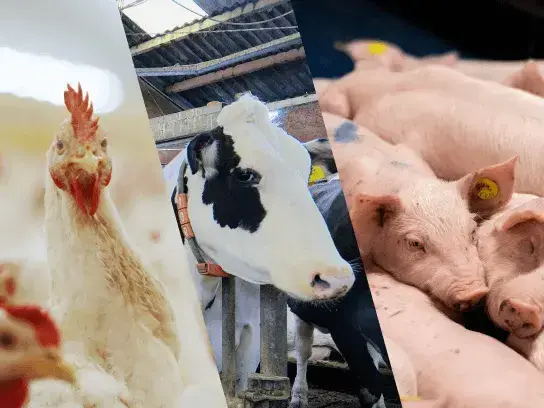- Poultry
- Laying Hens
- 2 minutes read
In the complex and fascinating world of poultry farming, continuous improvement and optimisation are key. The quest to enhance the well-being and performance of commercial layers is ongoing, and every factor that can influence these attributes is worth investigating. Of growing interest in the poultry industry is the potential of lighting. UVA lighting – a component of natural sunlight - hasn’t had that much attention in the poultry industry yet.
While UVA's impact has been studied extensively in other living organisms, its specific influence on poultry farming and, more precisely, commercial layers, remains relatively uncharted. Recognising the need to bridge this knowledge gap, our research team embarked on a study to investigate the effects of UVA lighting on commercial layers.
Purpose & Methodology
Our primary aim was to delve into how UVA lighting might affect various aspects of laying hen behaviour, performance, and overall health.

The study involved two groups of four hens each, in a small-scale research setting. One group experienced conditions under the HATO CORAX DDS with UVA lighting, while the second group was exposed to the same environment but without UVA lighting. The experiment comprised two distinct periods and, to nullify potential pen-related influences, hens were switched between pens during the research.
In-depth observations and measurements were conducted, taking into account factors like feed and water intake, weight and growth, hygiene, litter quality, and health evaluations. We also recorded specific details regarding the eggs produced, such as weight, dimensions, and quality.
In this blog, we focus on all factors, except for egg production. More information on the increase in egg production of the hens? Download the full research paper today!
Results
Pre-laying Development
In the pre-laying phase, commercial layers exposed to UVA lighting exhibited a marginal dip in growth. However, the standout observation was the enhanced development of the hens’ combs and wattles, which were larger and more red compared to the non-UVA group. This phenomenon suggested a possibility that increased energy was diverted towards development, hence the slight growth decrement.
Moreover, as corroborated by our figures, comb development in the UVA group was a notable two weeks ahead of the non-UVA group. The onset of egg production was also achieved four days earlier in the UVA group, with no significant disparities in feed intake, growth, and health status.


Litter Quality
On examining litter quality, the UVA pen's cleaner state was evident, with reduced spillage of feed noted. Our findings propose that the commercial layers under UVA conditions could better distinguish pellets, consequently consuming the feed from the litter - a behaviour not mirrored in the non-UVA group.
Commercial Layer Behaviour
Further analysis revealed fascinating behavioural differences. Hens exposed to UVA showed enhanced group behaviour, often imitating each other's activities. On the contrary, non-UVA hens exhibited more individualistic behaviour.
The result of this research was an array of positive outcomes seen in the hens exposed to the CORAX DDS with UVA lighting. Accelerated maturation, improved litter quality, and enhanced uniformity in behaviour were some of the noteworthy benefits. Even more impressively, the laying percentages reached unprecedented levels when compared to those of the hens exposed to the CORAX DDS without UVA.
For a comprehensive overview of our research and to tap into the full potential of UVA lighting download the complete research paper. It’s free!
Stay informed
Lighting matters. That's why we share our knowledge with the world through HATO Insights.
Pigs
Collaboration: How HATO Lighting and Optifarm Are Shaping the Future of Livestock
In modern livestock farming, success is no longer just about feed and shelter but about precision, insight, and care. That’s why HATO Lighting and Optifarm...
Pigs
How Optifarm is Transforming Livestock Farming with AI
In a world where agriculture is rapidly evolving, Optifarm stands out as a pioneer - bridging the gap between traditional farming and cutting-edge technology....
At HATO, we think high-quality lighting solutions, designed to enhance animal welfare and livestock production, must be accessible and affordable for all farmers.
Success Stories
Five Years, Zero Replacements: Why CORAX Is George Navaro’s Lighting of Choice
Herman Kusters: I would definitely recommend RUDAX

.webp)
.webp)

